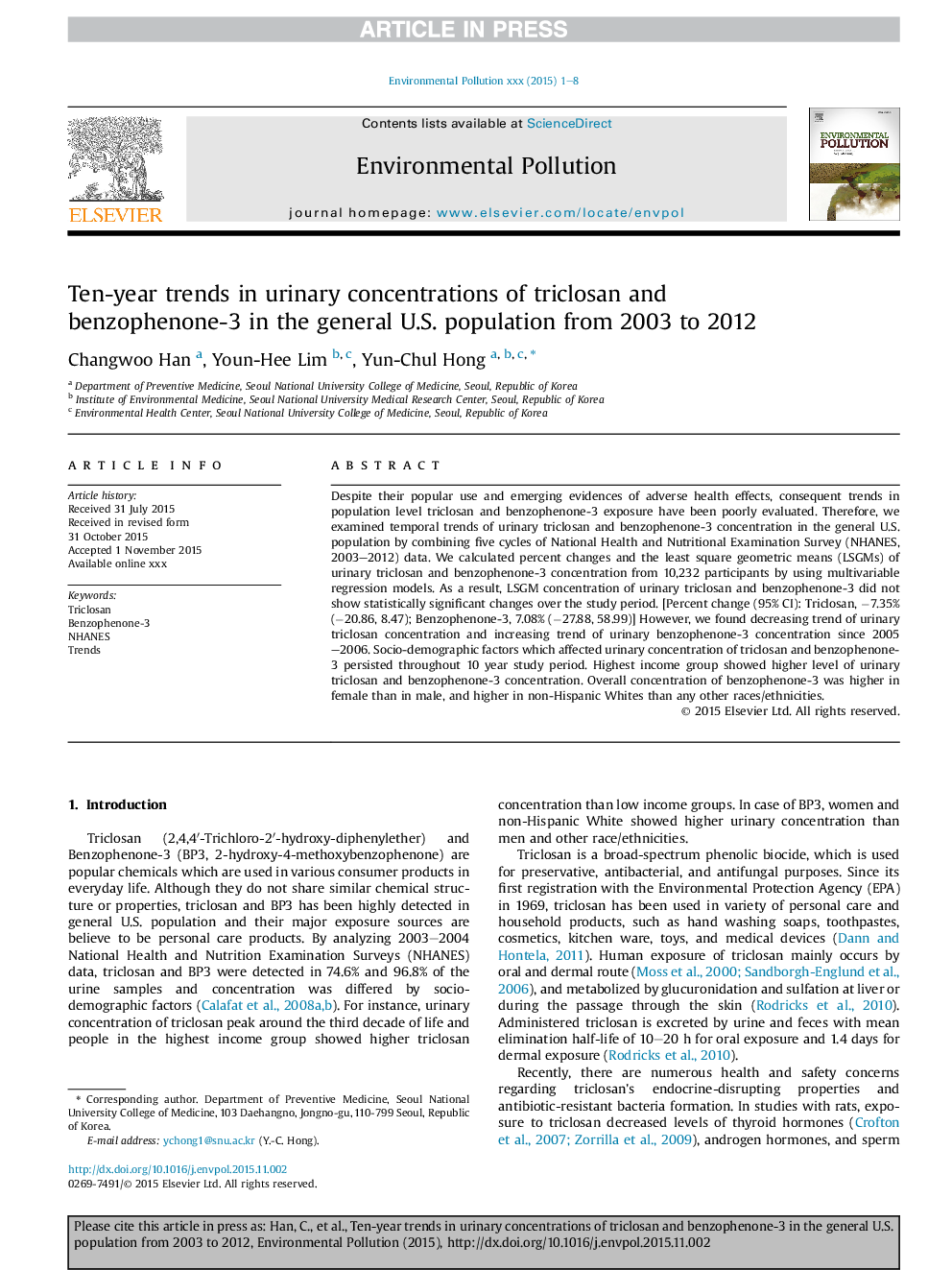| Article ID | Journal | Published Year | Pages | File Type |
|---|---|---|---|---|
| 6316350 | Environmental Pollution | 2016 | 8 Pages |
Abstract
Despite their popular use and emerging evidences of adverse health effects, consequent trends in population level triclosan and benzophenone-3 exposure have been poorly evaluated. Therefore, we examined temporal trends of urinary triclosan and benzophenone-3 concentration in the general U.S. population by combining five cycles of National Health and Nutritional Examination Survey (NHANES, 2003-2012) data. We calculated percent changes and the least square geometric means (LSGMs) of urinary triclosan and benzophenone-3 concentration from 10,232 participants by using multivariable regression models. As a result, LSGM concentration of urinary triclosan and benzophenone-3 did not show statistically significant changes over the study period. [Percent change (95% CI): Triclosan, â7.35% (â20.86, 8.47); Benzophenone-3, 7.08% (â27.88, 58.99)] However, we found decreasing trend of urinary triclosan concentration and increasing trend of urinary benzophenone-3 concentration since 2005-2006. Socio-demographic factors which affected urinary concentration of triclosan and benzophenone-3 persisted throughout 10 year study period. Highest income group showed higher level of urinary triclosan and benzophenone-3 concentration. Overall concentration of benzophenone-3 was higher in female than in male, and higher in non-Hispanic Whites than any other races/ethnicities.
Keywords
Related Topics
Life Sciences
Environmental Science
Environmental Chemistry
Authors
Changwoo Han, Youn-Hee Lim, Yun-Chul Hong,
